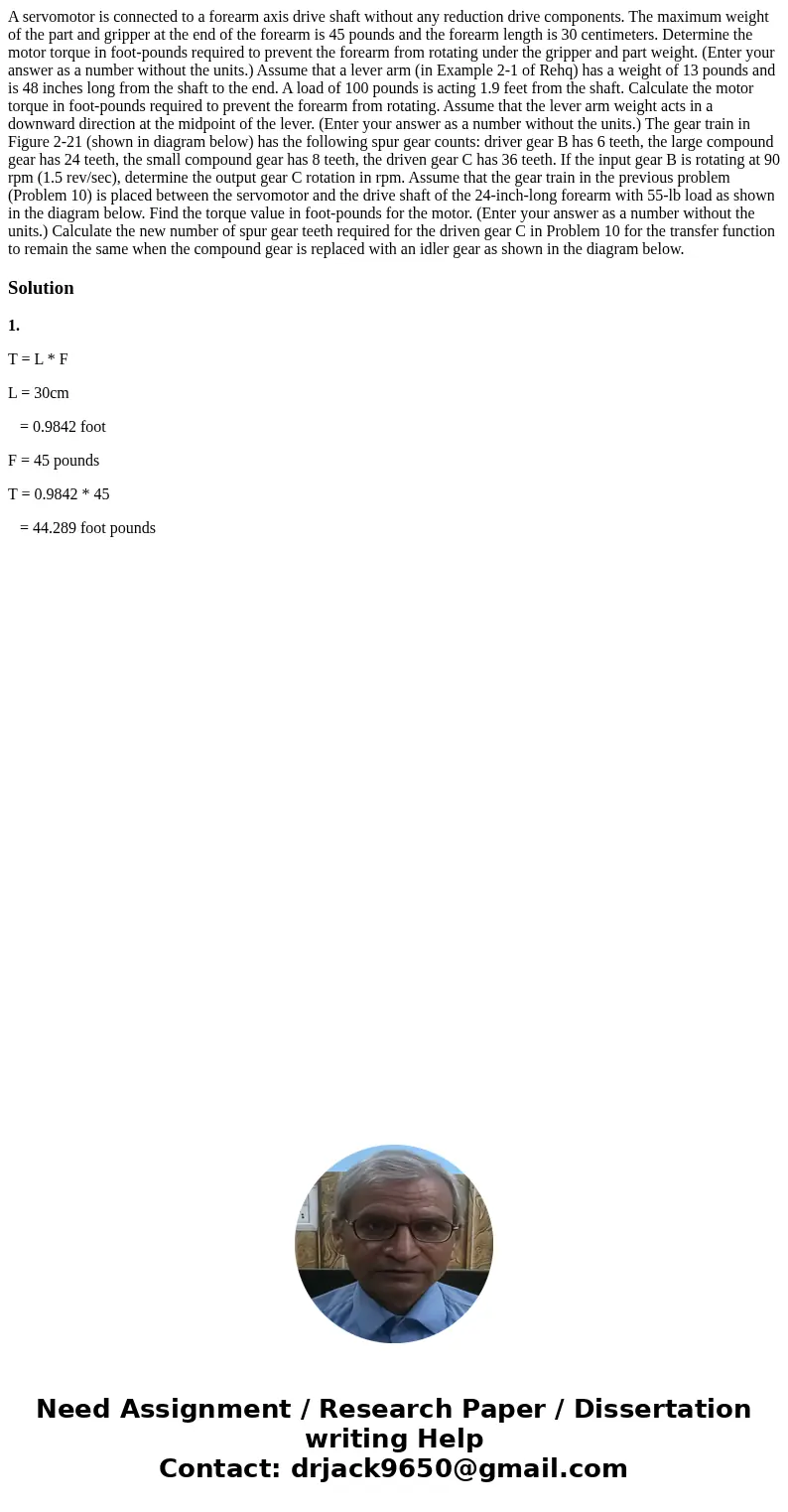A servomotor is connected to a forearm axis drive shaft with
A servomotor is connected to a forearm axis drive shaft without any reduction drive components. The maximum weight of the part and gripper at the end of the forearm is 45 pounds and the forearm length is 30 centimeters. Determine the motor torque in foot-pounds required to prevent the forearm from rotating under the gripper and part weight. (Enter your answer as a number without the units.) Assume that a lever arm (in Example 2-1 of Rehq) has a weight of 13 pounds and is 48 inches long from the shaft to the end. A load of 100 pounds is acting 1.9 feet from the shaft. Calculate the motor torque in foot-pounds required to prevent the forearm from rotating. Assume that the lever arm weight acts in a downward direction at the midpoint of the lever. (Enter your answer as a number without the units.) The gear train in Figure 2-21 (shown in diagram below) has the following spur gear counts: driver gear B has 6 teeth, the large compound gear has 24 teeth, the small compound gear has 8 teeth, the driven gear C has 36 teeth. If the input gear B is rotating at 90 rpm (1.5 rev/sec), determine the output gear C rotation in rpm. Assume that the gear train in the previous problem (Problem 10) is placed between the servomotor and the drive shaft of the 24-inch-long forearm with 55-lb load as shown in the diagram below. Find the torque value in foot-pounds for the motor. (Enter your answer as a number without the units.) Calculate the new number of spur gear teeth required for the driven gear C in Problem 10 for the transfer function to remain the same when the compound gear is replaced with an idler gear as shown in the diagram below.
Solution
1.
T = L * F
L = 30cm
= 0.9842 foot
F = 45 pounds
T = 0.9842 * 45
= 44.289 foot pounds

 Homework Sourse
Homework Sourse